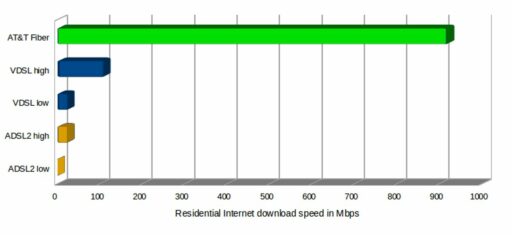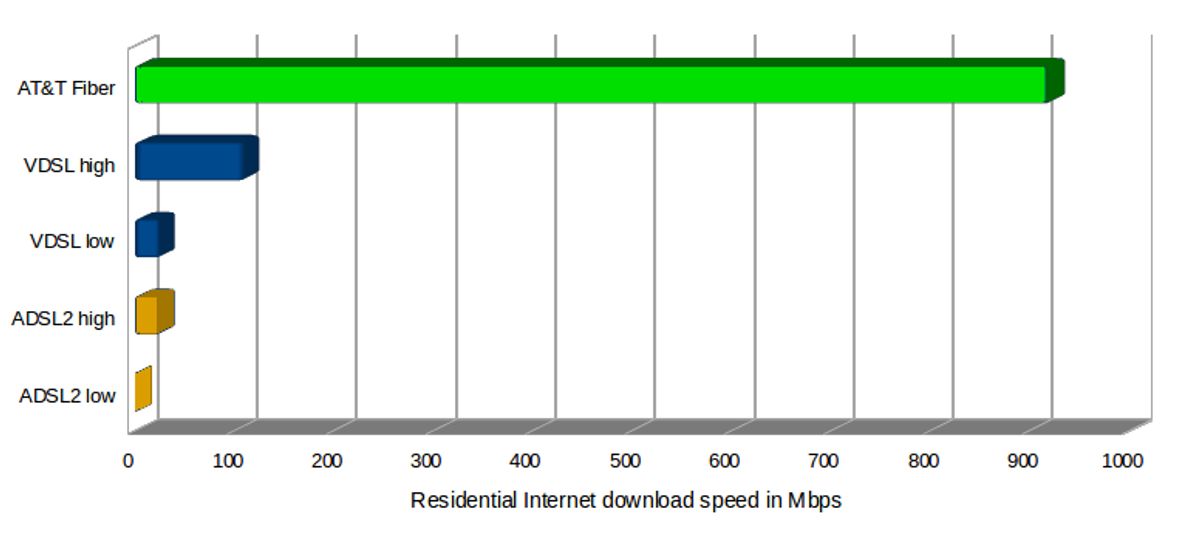AT&T Inc. (NYSE: T), a leading telecommunications company, has been a staple in investors’ portfolios, known for its high dividend yield and market presence. In this analysis, we delve into AT&T’s stock performance, market trends, and expert predictions to provide a comprehensive view of the investment potential of T shares in the current financial landscape.
Key Takeaways
- AT&T’s stock has shown resilience, with a slight increase in share price in 2024, suggesting steady performance.
- Wall Street analysts give AT&T a ‘moderate buy’ rating with a consensus price target of $21.61, indicating potential upside.
- Technical analysis reveals a bullish trend post Q4 earnings, as the stock reclaimed key moving averages.
- AT&T maintains a high dividend yield of approximately 6%, making it an attractive option for dividend investors.
- Investors should weigh the pros and cons, including AT&T’s market cap, dividend stability, and analyst forecasts before making investment decisions.
Current Performance and Market Position

Recent Stock Performance
AT&T’s stock performance has been a subject of keen interest for investors, with the average stock price target set at $21.61. The potential upside/downside indicates a 26.7% increase from the current trading price, reflecting a consensus rating of ‘Moderate Buy‘ from analysts. The company’s earnings per share (EPS) for the most recent fiscal year stood at $1.96, supported by a net income of $14.40 billion.
| Metric | Value |
|---|---|
| High Stock Price Target | $30.00 |
| Low Stock Price Target | $17.00 |
| Consensus Rating | Moderate Buy |
| Rating Score | 2.67 |
| Analysts Covering | 15 |
The stock’s valuation is further underscored by a trailing P/E ratio of 8.70 and a forward P/E ratio of 7.68, suggesting that the stock may be undervalued relative to its earnings potential. The return on equity (ROE) stands at a robust 15.39%, indicating efficient management of shareholder’s equity.
While the market navigates through various economic challenges, AT&T’s stock remains a focal point for investors seeking stability and potential growth in the telecommunications sector.
Market Capitalization and Share Statistics
AT&T’s market capitalization currently stands at approximately $122.74 billion, reflecting the total market value of its outstanding shares. The company’s stock trades within a 52-week range between $13.43 and $19.99, indicating the volatility and the price range it has experienced over the past year. The average trading volume is a significant indicator of liquidity, with AT&T averaging 38.81 million shares traded per day.
AT&T’s share statistics are a testament to its size and the investor interest it garners in the telecommunications sector.
The following table summarizes key share statistics for AT&T:
| Metric | Value |
|---|---|
| 52-Week Range | $13.43 – $19.99 |
| Average Volume | 38.81 million shs |
| Market Capitalization | $122.74 billion |
| P/E Ratio | 8.76 |
| Dividend Yield | 6.47% |
Investors often scrutinize these figures to gauge the company’s performance relative to its peers and to assess the stock’s potential as an investment.
Dividend Yield and Payout Stability
AT&T has consistently rewarded its shareholders with dividends, maintaining a dividend yield higher than 75% of all dividend-paying stocks. The company’s commitment to a stable dividend is evident from its payout ratio, which stands at a healthy 56.63%, well below the 75% threshold that might suggest a risk to dividend sustainability.
AT&T’s ability to sustain or potentially increase its dividend is supported by earnings estimates, projecting a future payout ratio of 47.84%.
The following table outlines AT&T’s projected dividend yield and payout ratio for the coming years:
| Year | Dividend | Dividend Yield | Payout Ratio |
|---|---|---|---|
| 2024 | $1.12 | 6.53% | 47.84% |
| 2025 | $1.13 | 6.59% | N/A |
| 2026 | $1.13 | 6.60% | N/A |
| 2027 | $1.18 | 6.88% | N/A |
| 2028 | $1.23 | 7.17% | N/A |
With over $8 billion paid in cash dividends annually and a projected free cash flow of $16.5 billion, AT&T uses less than half of its free cash flow to cover dividend payments, indicating a strong capacity to maintain its dividend program.
Analyst Insights and Stock Ratings

Wall Street Analyst Ratings
AT&T’s stock has recently seen a mix of upgrades and reiterations from major Wall Street firms, reflecting a cautiously optimistic outlook among analysts. Wolfe Research upgraded AT&T to ‘Buy’, signaling a positive shift in expectations. Meanwhile, firms like Barclays and Morgan Stanley have reiterated their positions, suggesting a steady confidence in the company’s market strategy.
The consensus among analysts indicates a belief in AT&T’s potential for growth, albeit with a recognition of the challenges it faces in a competitive market.
Analyst ratings are a key driver of investor sentiment and can significantly impact stock prices. The following table summarizes the latest analyst actions:
| Date | Analyst Firm | Rating | Price Target | Action |
|---|---|---|---|---|
| 03/05/24 | Wolfe Research | Buy | $21 | Upgraded |
| 02/28/24 | Barclays | Hold | $20 | Reiterated |
| 02/26/24 | Bank of America Sec. | Buy | $24 | Reiterated |
| 02/22/24 | Morgan Stanley | Hold | $20 | Reiterated |
| 02/01/24 | Citigroup Corp. | Buy | $18 | Maintained |
Investors are advised to monitor these ratings alongside broader market trends to make informed decisions.
Price Targets for 2024
As we look towards 2024, AT&T’s stock price targets present a varied landscape according to Wall Street analysts. The average price target stands at $27.25, with the spectrum ranging significantly from a low of $17.00 to a high of $109.00, based on 15 analysts’ projections.
The potential upside, when compared to the current stock price, is a noteworthy point for investors to consider.
The table below encapsulates the price targets and the implied upside or downside:
| Analyst Firm | Price Target | Upside/Downside |
|---|---|---|
| Wolfe Research | $109.00 | Highest Upside |
| Barclays | $30.00 | – |
| Average | $27.25 | – |
| Lowest | $17.00 | Highest Downside |
These targets suggest a potential upside of 26.7%, reflecting a moderate buy consensus among analysts. The rating score, on a scale from 0 to 4, is currently at 2.67, indicating a cautiously optimistic outlook from the market experts.
Top Analysts’ Perspectives
The perspectives of top analysts are pivotal in shaping investor sentiment towards AT&T stock. Recent upgrades and maintained buy ratings reflect a growing confidence in the company’s financials and market strategy. The consensus among leading analysts indicates a positive outlook, with several upgrades to ‘Buy’ status in recent months.
Following the release of AT&T’s 3Q FY23 results, which surpassed revenue expectations by $130 million, analysts have been reassessing their positions. The table below summarizes the latest analyst ratings and price targets:
| Analyst Firm | Rating | Price Target | Date |
|---|---|---|---|
| Wolfe Research | Buy | $21 | 03/05/24 |
| Citigroup Corp. | Buy | $20 | 02/01/24 |
| J.P. Morgan | Buy | $21 | 02/01/24 |
| Barclays Capital | Hold | $20 | 01/31/24 |
| Deutsche Bank | Buy | $24 | 01/25/24 |
The alignment of analyst ratings with AT&T’s performance highlights the stock’s potential for growth and stability in the market.
Investors are encouraged to monitor analyst ratings, as they can serve as a barometer for the stock’s future trajectory. The Best Analyst Covering tool is particularly useful for following those with the highest success rates and average returns on AT&T stock.
Fundamental Analysis

Earnings Overview and Trends
AT&T has demonstrated a robust financial performance in recent quarters, with a particular highlight being the third-quarter earnings and revenue that topped estimates. The company’s ability to exceed expectations, especially with wireless subscriber additions coming in above expectations, signals a strong market position and operational efficiency.
For a detailed look at the earnings trend, consider the following table which outlines the average earnings estimates from analysts for upcoming quarters and years:
| Period Ending | Average Estimate (USD) | Year Ago (USD) |
|---|---|---|
| 12/31/23 | 0.557 | 0.610 |
| 03/31/24 | 0.535 | 0.600 |
| 06/30/24 | 0.573 | 0.630 |
| Current Year 12/31/24 | 2.216 | 2.410 |
| Next Year 12/31/25 | 2.305 | 2.216 |
The table indicates a slight dip in the average earnings estimates compared to the previous year’s figures, which may warrant investor caution. However, the forward-looking estimates suggest a recovery and growth in the subsequent year.
The consistency in surpassing earnings estimates reflects AT&T’s adaptability in a competitive telecommunications landscape and its strategic initiatives to drive growth.
Financial Health and Ratios
AT&T’s financial health is a critical aspect for investors to consider. The company’s debt-to-equity ratio stands at 1.09, indicating a higher reliance on debt financing relative to equity. This ratio is a key metric that helps assess the company’s financial leverage and risk.
The liquidity of AT&T is also a point of concern, with a current ratio of 0.71 and a quick ratio of 0.67. These figures suggest that the company may face challenges in covering its short-term obligations. The quick ratio, in particular, is a stringent measure of liquidity, as it excludes inventory from current assets.
AT&T INC has very weak liquidity. Currently, the Quick Ratio is 0.43 which clearly shows a lack of ability to cover short-term cash needs.
Despite these concerns, AT&T’s free cash flow remains robust, with a free cash flow per share of $2.53, indicating the company’s ability to generate cash after capital expenditures. This is a positive sign for dividend sustainability and potential reinvestment in the business.
Revenue Streams and Profitability
AT&T’s financial stability is often gauged by its revenue streams and profitability metrics. The company’s communications segment is the powerhouse of revenue, consistently driving the bulk of its financial success. With a strategic shift to focus more on its core telecom operations, AT&T has been divesting its entertainment businesses, streamlining its portfolio to enhance profitability.
The following table provides a snapshot of AT&T’s recent financial performance:
| Year | Revenue ($M) | Net Profit Adjusted ($M) | EPS (Non-GAAP) | Dividend Yield (%) |
|---|---|---|---|---|
| 2024 | 123,690 | 20,754 | 2.22 | 6.53 |
| 2025 | 124,576 | 21,740 | 2.30 | 6.59 |
| 2026 | 125,529 | 22,298 | 2.37 | 6.60 |
| 2027 | 127,445 | 23,654 | 2.64 | 6.88 |
| 2028 | 129,973 | 22,007 | 2.44 | 7.17 |
AT&T’s ability to maintain a strong dividend yield alongside its profitability is a testament to its financial health and operational efficiency.
The company’s commitment to shareholder returns is evident in its dividend track record, with a forecasted increase in dividend yield over the next five years. This, coupled with a solid earnings per share (EPS) growth, paints a promising picture for investors looking at the long-term horizon.
Technical Analysis and Future Predictions

Chart Patterns and Technical Indicators
AT&T’s stock has exhibited several notable chart patterns and technical indicators that could suggest future price movements. A recent analysis by StockConsultant highlighted key aspects such as breakout and price targets, as well as support and resistance levels, which are crucial for investors to monitor.
The interpretation of these technical indicators is essential for predicting short-term price fluctuations and determining optimal entry and exit points.
Technical analysts often refer to psychological indicators and relative strength among stocks to gauge market sentiment. For AT&T, the following technical indicators have been particularly telling:
- Breakout Levels: Points where the stock price moves outside a defined support or resistance level with increased volume.
- Support and Resistance Levels: Price levels at which the stock historically has had difficulty falling below (support) or rising above (resistance).
- Price Targets: Analysts’ projections of the future price based on the stock’s performance and market conditions.
Understanding these indicators in the context of the overall market trend and stock market data can provide a more comprehensive view of AT&T’s potential trajectory.
Stock Forecast and 12 Months Prediction
As investors scrutinize AT&T’s future, the 12-month stock forecast becomes a focal point of discussion. According to a recent forecast by Capital.com, there is a possibility that AT&T’s stock could experience a decline, potentially falling to $13.91 over the next year. This projection is a stark contrast to the more optimistic revenue and earnings estimates provided by analysts for the upcoming quarters.
While forecasts vary, the consensus among analysts suggests a cautious approach, with a keen eye on the company’s strategic moves and market dynamics.
The table below summarizes the earnings and revenue estimates for AT&T over the next few years, reflecting a gradual increase in both metrics:
| Year | Earnings Estimate (USD) | Revenue Estimate (USD) | Dividend (USD) | Dividend Yield (%) | EPS | P/E Ratio |
|---|---|---|---|---|---|---|
| 2024 | 2.216 | 123,690 | 1.12 | 6.53 | 2.22 | 7.74 |
| 2025 | 2.305 | 124,576 | 1.13 | 6.59 | 2.30 | 7.45 |
| 2026 | – | – | – | – | – | – |
It’s important to note that while these estimates provide a glimpse into AT&T’s potential financial trajectory, they are subject to change based on a multitude of factors, including market conditions and company performance.
Impact of Recent Earnings Reports
AT&T’s recent earnings reports have shown a modest increase in revenues, signaling a stable financial trajectory. The third-quarter revenues reached $29.2 billion, marking a 0.4% year-over-year growth. This uptick was primarily driven by gains in the Mobility and Consumer Wireline segments, which helped to counterbalance declines in other areas.
The company’s updated guidance reflects confidence in its financial performance, with raised projections for full-year Adjusted EBITDA and Free Cash Flow.
Analysts are closely monitoring these figures as they may influence AT&T’s stock performance in the coming quarters. The table below summarizes the earnings estimates and revenue projections for the upcoming quarters and fiscal years:
| Quarter Ending | Earnings Estimate (USD) | Revenue Estimate (USD) |
|---|---|---|
| 03/31/24 | 0.535 | 30,620 |
| 06/30/24 | 0.573 | 30,313 |
| 12/31/24 | 2.216 | 123,690 |
| 12/31/25 | 2.305 | 124,576 |
Investors are advised to consider these projections alongside broader market conditions and company-specific developments when evaluating AT&T’s future stock potential.
Investment Considerations
Pros and Cons of Buying AT&T Stock
When considering AT&T stock as a potential addition to your portfolio, it’s important to weigh both the advantages and challenges the company presents. Investors may find AT&T’s high dividend yield appealing, especially in a landscape of relatively low interest rates. The company’s established presence in the telecommunications sector offers a degree of stability and reliability.
However, caution is advised as AT&T’s stock is currently below a buy point and key moving averages, suggesting it may not be the optimal time to purchase. The company’s recent earnings and sales growth also do not meet the threshold that investors typically look for, which is at least 25% growth in recent quarters.
While AT&T is often considered a safe haven during market volatility, its current performance indicators suggest that investors should carefully consider the timing and potential long-term value before buying shares.
Here’s a quick rundown of the pros and cons:
-
Pros:
- High dividend yield
- Established market presence
- Potential for value investing
-
Cons:
- Below buy point and key averages
- Insufficient earnings and sales growth
- Market volatility and competitive challenges
Dividend Investment Strategy
Investing in AT&T for its dividend potential requires a strategic approach. AT&T’s commitment to reducing its net debt while maintaining a stable dividend payout is a key consideration for investors. The company’s goal to reach a net debt to adjusted EBITDA ratio of 2.5x by the end of 2023 signals a strong focus on financial health, which is crucial for sustaining dividends.
For those looking to incorporate AT&T shares into their dividend investment portfolio, the following steps are recommended:
- Assess the current dividend yield and compare it with historical rates.
- Evaluate the payout ratio to determine the sustainability of dividends.
- Monitor the company’s debt levels and free cash flow to ensure ongoing ability to pay dividends.
- Stay informed on AT&T’s long-term growth strategy and financial outlook.
While dividends are an attractive feature, investors should not overlook the importance of total return, which combines dividend income with capital appreciation.
Short Interest and Market Sentiment
The short interest in AT&T stock reflects a healthy market dynamic, with only a small percentage of shares sold short. This indicates that while there is some skepticism, it is not overwhelming and may suggest a stable investor confidence in the company’s future.
Market sentiment towards AT&T is currently mixed, with some analysts expressing a moderate buy rating, while others remain cautious. The intrinsic valuation and fundamental analysis suggest that AT&T Inc is undervalued by 44%, presenting a potential opportunity for investors.
The market’s current stance on AT&T, combined with its intrinsic valuation, paints a picture of a stock that may be poised for growth, despite the cautious sentiment.
Understanding the balance between short interest and overall market sentiment can provide investors with a nuanced view of the stock’s potential. It’s important to consider these factors alongside other financial metrics and analyst insights when evaluating AT&T as an investment.
Conclusion
In summary, AT&T’s stock analysis reveals a cautiously optimistic outlook for 2024, with a moderate buy consensus from Wall Street analysts and a potential upside in share price targets. Despite a challenging 2022, the stock has shown resilience in early 2024, with a slight increase in share price and a strong dividend yield that continues to attract investors. The company’s performance in the last quarter has been encouraging, and its position as a stable telecom provider offers a degree of safety in volatile markets. Investors considering AT&T should weigh the pros and cons, including its high dividend yield and recent earnings, against the broader market trends and individual investment strategies. As always, it’s recommended to conduct thorough research and consider professional financial advice before making any investment decisions.
Frequently Asked Questions
Should I buy or sell AT&T stock right now?
According to Wall Street analysts, the consensus is that investors should consider a ‘moderate buy’ for AT&T shares. There are currently 10 buy ratings and 5 hold ratings.
What is AT&T’s stock price target for 2024?
Analysts have set 1-year price targets for AT&T’s stock ranging from $17.00 to $30.00, with an average target of $21.61, suggesting a potential upside of 26.7% from the current price.
How have T shares performed in 2024?
AT&T’s stock was trading at $16.78 at the beginning of the year. Since then, T stock has increased by 1.7% and is now trading at $17.06.
Is AT&T stock a good buy after mixed Q4 earnings?
AT&T is considered a safe haven during market volatility and maintains a high 6% annualized dividend yield. Investors may consider buying AT&T stock, but should review recent earnings and market trends.
What are the pros and cons of investing in AT&T stock?
The pros of investing in AT&T include its status as a recognizable wireless carrier, potential for dividend income, and stability during volatile markets. Cons may include mixed earnings results and market competition.
What is AT&T’s dividend yield and how stable is it?
AT&T has a high dividend yield of 6.57%, and its dividend payout has been considered stable. However, investors should always review the company’s financial health and dividend history for any changes.





